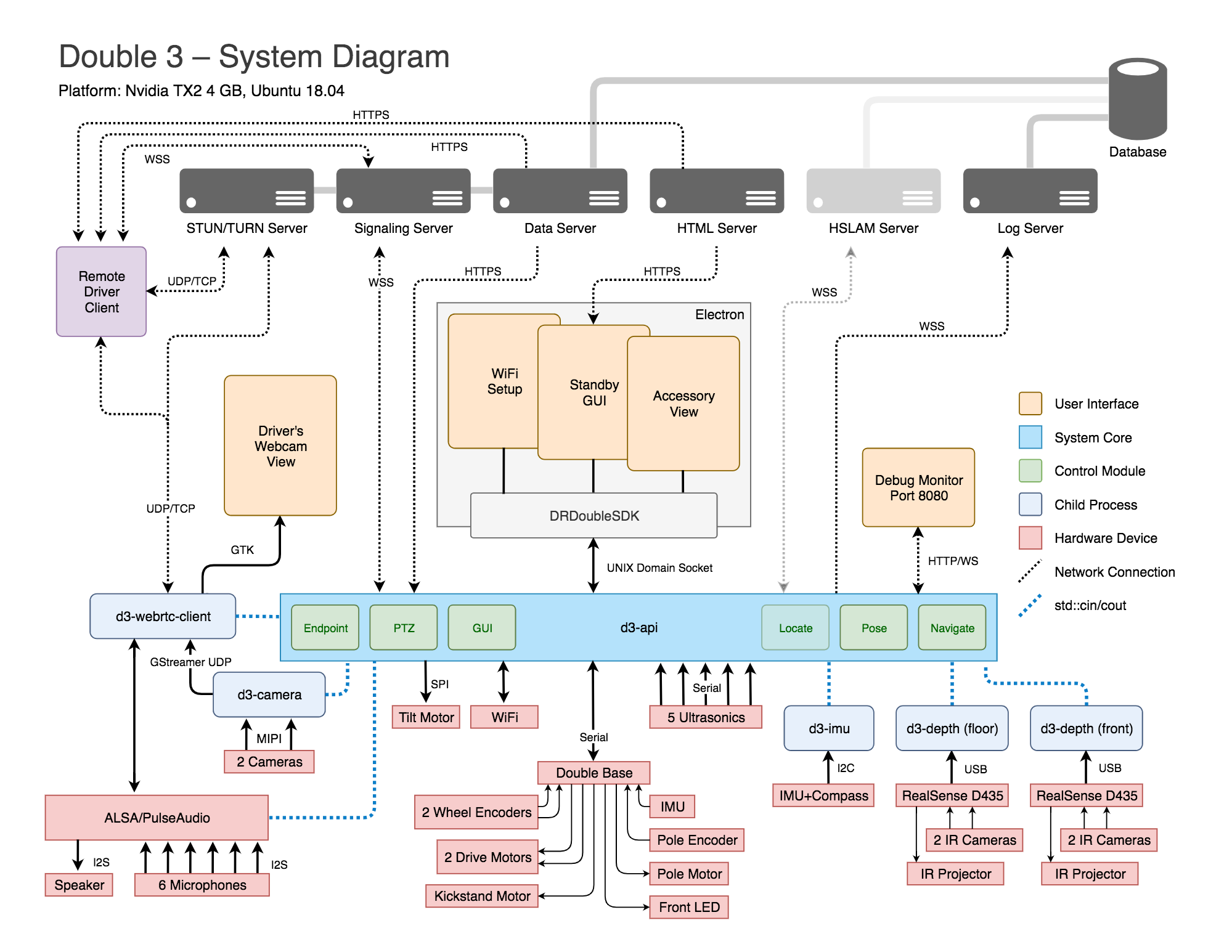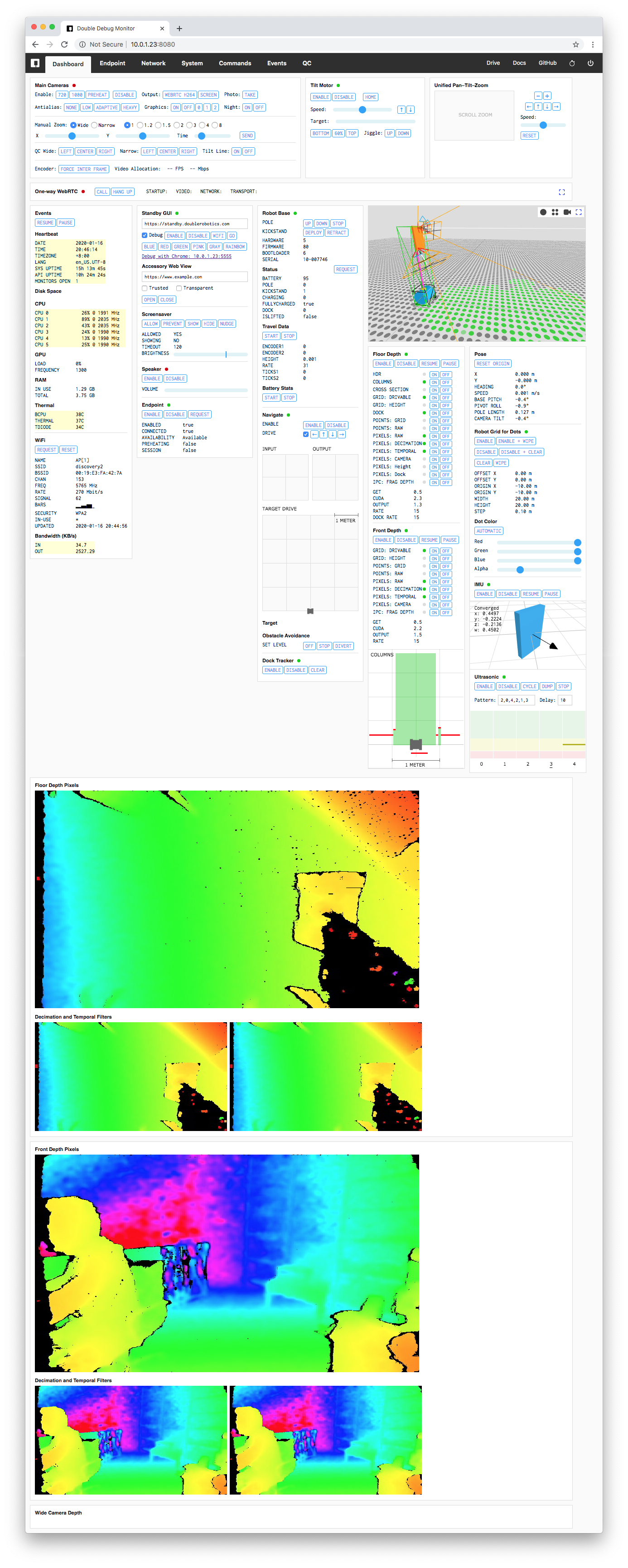Before accessing any developer features, your Double 3 will need to be put into developer mode.
Double 3 is powered by an Nvidia Jetson TX2-4GB System-on-Module connected to various built-in sensors and devices. The hardware is similar to an Nvidia Jetson TX2 Dev Kit with added peripherals.
You can write and deploy your own custom code on your D3. The D3 head runs Ubuntu 18.04 with the aarch64 architecture, so you can write code in any language that runs on that platform.
The core D3 software runs as a system service called d3. Your code will interact with this service by sending commands and receiving events. All commands and events are sent over a standard Unix domain socket. See more about communicating with the D3 service.
You can write an application in HTML and JavaScript and run it in the GUI module as a custom standby screen. You can set it to load on the D3 screen on boot. The GUI module runs an instance of Electron's BrowserWindow, which is essentially a Chromium web view window. Your application is not Electron-specific code, but just a standard web application. It has a preloaded global object that facilitates communication with the d3 service.
Most applications can be HTML applications. You have access to cameras, microphones, and the output of most sensors.
You can also write applications in any other language that will run on the device, such as Python, C++, or Go. However, you will need to manage launching your application on boot. If you choose to do this, you can disable the default GUI from launching on boot.
With a native application, you can get access to raw sensor data, such as direct access to the RealSense D430 depth sensors. You could also create a user interface using any GUI toolkit that you prefer.
- nodejs-basic - This example shows the most basic way to communicate with the d3 service in Node.js.
- python-basic - This example shows the most basic way to communicate with the d3 service in Python.
- standby-basic - This example shows the most basic usage of displaying a page on screen, sending commands via DRDoubleSDK and processing incoming events.
- standby-camera - This example shows how to set the output of the camera as a v4l2 source and show it on the D3 screen with
getUserMedia. - standby-webrtc - This example shows how to orchestrate a WebRTC call using a custom standby screen and the native WebRTC implementation that takes advantage of the hardware h264 encoder.
- API.md lists all commands and events.
- Communication.md describes the command and event JSON packet structures.
- Developer Mode.md describes entering and exiting developer mode.
- Glossary.md describes key terms used throughout this documentation.
- Security.md discusses security measures and how to maintain security when deploying.
- Startup.md describes how to customize what runs on boot.
- D3 System Diagram shows how the hardware sensors, system daemons, GUI, and servers interconnect.
The Debug Monitor allows you to view and control all of your Double's features from a web interface hosted by an internal server on your D3. The Debug Monitor is a great way to test the functionality of commands before writing any code.
Open the Debug Monitor of your D3 in Chrome on your computer by visiting: http://YOUR_D3_IP:8080. You can find your D3's local IP by tapping the WiFi icon on the default standby screen. This tool uses the same API commands that you can use in a custom application to communicate with the D3 system.

